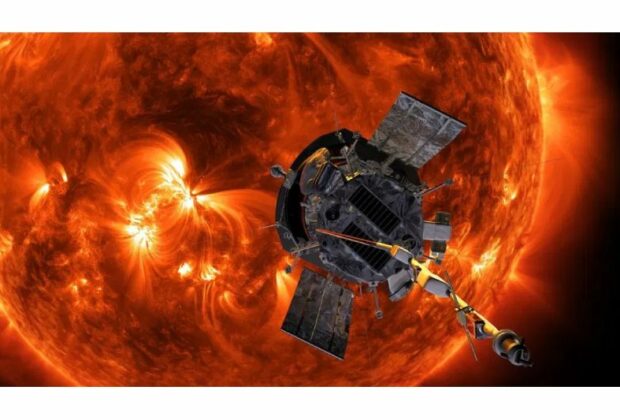NASA’s Parker Solar Probe, a spacecraft that is traveling far nearer to the sun than any other mission, has observed enormous “vortex-like structures” in the corona, the outermost layer of our star. Below is an unparalleled view captured by the Wide-field Imager for Parker Solar Probe (WISPR) camera on board the probe, which was recently made available online.
Scientists believe that a coronal mass ejection (CME), which occurs when the sun expels a large amount of extremely hot gas (plasma) into space, interacting with the solar wind, is what produced the phenomenon. Our medium-sized star continuously releases charged particles into space, which is why the sun’s solar wind remains constant.
According to recent study related to the video that was published in The Astrophysical Journal, this discovery in previously unexplored solar regions has opened up new avenues for understanding and forecasting coronal mass ejections, or CMEs, which are outbursts that have the potential to seriously disrupt Earth’s electrical and communications networks. These uncommon vortices are known as “Kelvin-Helmholtz instabilities,” or KHI, in technical parlance.
“The direct imaging of extraordinary ephemeral phenomena like KHI with WISPR/PSP is a discovery that opens a new window to better understand CME propagation and their interaction with the ambient solar wind,” according to a statement from Evangelos Paouris, a space weather researcher and member of the WISPR team at George Mason University.
Coronal magnetic fields “can endanger satellites, disrupt communications and navigation technologies, and even knock out power grids on Earth,” according to NASA. Famously, millions of people in Québec, Canada, lost electricity in 1989 because to a strong CME.
On March 12 of that year, the CME struck Earth’s magnetic field. Following that, NASA astronomer Sten Odenwald noted, “Just after 2:44 a.m. on March 13, the currents found a weakness in the electrical power grid of Québec. In less than two minutes, the entire Québec power grid lost power. During the 12-hour blackout that followed, millions of people suddenly found themselves in dark office buildings and underground pedestrian tunnels, and in stalled elevators.”
Parker Solar Probe, a space agency project, will keep plunging faster and faster into the solar corona. It is strengthened with a 4.5-inch-thick carbon heat shield facing the sun in order to endure the heat. Even if the shield itself warms up to about 2,500 degrees Fahrenheit, the surroundings are pleasantly mild a few feet beyond the shield.
The spaceship will reach an incredible 430,000 kilometers per hour later this year.








